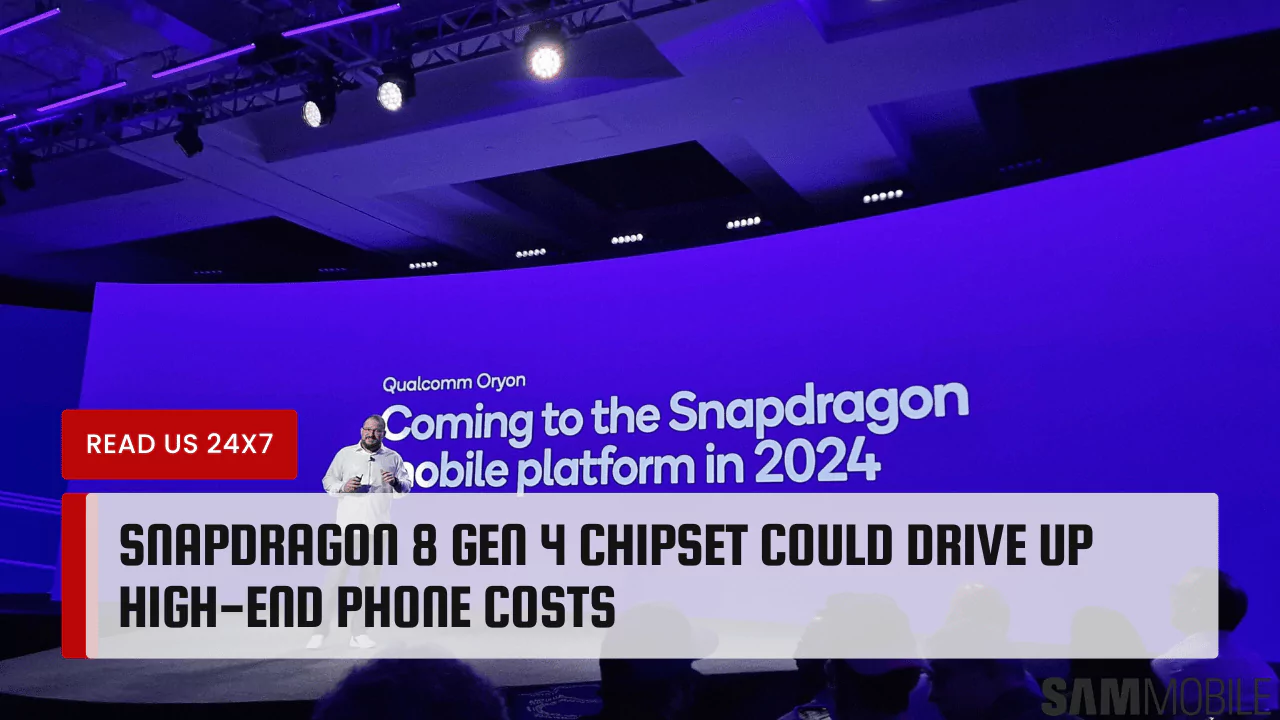The Snapdragon 8 Gen 4 chipset, anticipated to power next year’s top-tier smartphones, might come with a hefty price tag. Leaks suggest a significant increase in cost compared to its predecessor, potentially leading to a ripple effect in the pricing of flagship phones in 2025.
Potential Impact of Snapdragon 8 Gen 4 on Flagship Phone Prices
With the looming prospect of a higher-priced Snapdragon 8 Gen 4 chipset, manufacturers could face tough decisions. The increased cost of the processor, one of the largest expenses in smartphone production, may prompt OEMs to pass the burden onto consumers. This could translate into higher retail prices for high-end phones, impacting consumers’ purchasing decisions.
Qualcomm’s New Oryon Cores and Potential Performance Boost
Despite the potential price hike, the Snapdragon 8 Gen 4 is anticipated to deliver exceptional performance. Qualcomm’s custom Oryon CPU technology promises a significant leap in processing power, potentially outperforming Apple’s iPhones. However, the enhanced performance might come at a premium, adding to the overall cost of smartphones featuring this chipset.
Samsung’s alternative, the 3nm Exynos 2500 chipset, is also expected to offer efficiency and performance. Competing against Qualcomm, Samsung aims to provide consumers with compelling options, albeit at potentially differing price points.
Possible Consequences for Consumers and Manufacturers
The ramifications of the Snapdragon 8 Gen 4’s price increase could reverberate across the smartphone landscape. For instance, flagship models like the Samsung Galaxy S25 may see a bump in their price tags to accommodate the higher cost of the Snapdragon 8 Gen 4 chipset. This could present challenges for consumers seeking premium devices without breaking the bank.
However, not all players may face the same obstacles. MediaTek, known for offering competitive alternatives, might capitalize on the situation by providing more affordable chipset options. This could potentially diversify the market and offer consumers a wider range of choices at various price points.
Furthermore, Google’s Tensor chip, introduced in their Pixel lineup, could also benefit from the Snapdragon 8 Gen 4’s price hike. As consumers weigh their options, Google may seize the opportunity to position its Tensor chip as a compelling alternative, potentially gaining market share in 2025.
In conclusion, while the Snapdragon 8 Gen 4 chipset promises unparalleled performance, its anticipated price increase could reshape the landscape of flagship phone prices in 2025. As manufacturers navigate these challenges, consumers may witness shifts in pricing strategies and chipset preferences. Ultimately, the impact of these changes will be felt across the smartphone industry, influencing purchasing decisions and market dynamics.



